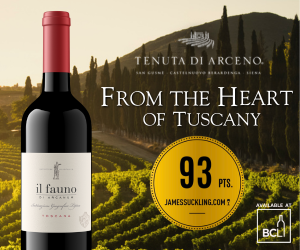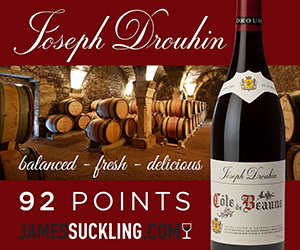It's not easy being green.
~ Kermit the Frog
Sorry Kermit. The times have changed. There are numerous shades of green in the wine world nowadays, and consumers don’t have to sacrifice quality to taste them. Green generally isn’t usually something you look for in a wine. For wine geeks, ‘green’ can note under-ripe fruit and lip-stinging acid. But the global movement towards all things earth-friendly and planet-preserving also extends to wine. In fact, from ground to grape to glass, some wine producers have gone back to their roots, literally, in creating a sustainable product. Think about it - winemaking has been around for thousands of years and is a very natural and organic process. In today’s mass-market consumerism, modern winemaking is anything but. From the pesticides in the farming, to the gas to run the tractor, to the manufacture of the glass bottles, to the global shipping engine, the wine on your table costs more than dollars.
So how do you drink green, and well? Simple: think about wine like you think about food. It’s bonkers to buy organic vegetables and free range chicken and GMO-free breads made from heirloom grains – to serve it with an $8 bottle of chemically enhanced, additive-heavy, commodity-based, 20 million bottle/year production of manufactured plonk. You care about where your tomatoes and your salmon comes from? Good on you, responsible consumer. How about thinking about where your wine comes from too? I would love to see folks pay as much attention to what goes in your glass as what goes on your plate.
How to drink green (in a good way?) Here are some of our picks tasted over the past year at GOW.
Sustainable
This is not a regulated term and it differs from place to place. Generally sustainable winemaking (or lutte raisonee, as the French call it) signals a closer connection to the land, farming and winemaking practices. Often chemicals are reduced or eliminated in the vineyard and winery, water and machinery use is monitored closely and every effort is made to produce wine in a clean manner. Sustainable winery practices can extend beyond the product itself, to committing to a healthy workplace environment for employees and the community. Some wine producing countries and regions have made sustainability a key focus; New Zealand, South Africa, Chile have led in this arena.
91. Rodney Strong Cabernet Sauvignon Alexander's Crown Single Vineyard 2012, Alexander Valley, California
89. Intersection Silica Merlot 2012, Okanagan Valley, British Columbia, Canada
89. Te Mata Gamay Noir 2013, Hawkes Bay, New Zealand
88. Cono Sur Bicicleta Viognier 2015, Colchagua Valley, Chile
Organic
Organic farmers use no fungicides or pesticides in the vineyard, relying on natural fertilizers and biological pest control. Becoming certified organic is a lengthy and pricy process – one that many smaller producers don’t have the time or money to do. Keeping that in mind, just because it doesn’t say ‘organic’ on the label, doesn’t mean it wasn’t farmed and produced organically. In addition, the definition of organic varies from country to country. In the United States, no sulfites may be added at all for an organic certified wine, making it very difficult for producers to obtain certification. More on sulfites below.
90. Domini de la Cartoixa Formiga de Vellut 2012, Priorat, Spain.
88. Yalumba Organic Shiraz 2014, South Australia
88. Summerhill Pyramid Riesling Organic 2014, Okanagan Valley, British Columbia, Canada
Biodynamic
You can think of biodynamics as “extreme organic”. This holistic philosophy of farming can include tending vines according to the astronomical calendar and using herbs, minerals and manure for sprays and composts. Emphasis is placed on the integration of crops and livestock, recycling of nutrients, soil maintenance, and the health and well-being of the animals, the farmer, the farm, and the earth. Though debunked by many as zany, in reality, the key principles behind biodynamic success is not mysticism at all - it’s the detailed and dedicated caretaking of the individual parts of the process that make up a complete whole. More time in the vineyard and caring for the health of the vines and soils leads to better wines. Easy math.
91. Bodega Noemia A Lisa 2012, Rio Negro, Patagonia, Argentina
90. Yangarra Roussanne 2012, McLaren Vale, South Australia, Australia
89. Parés Baltà Blanc de Pacs 2014, Penedès, Spain
89. M. Chapoutier Belleruche Côtes du Rhône Grenache Syrah 2012, Côtes du Rhône, Rhone Valley, France
89. Claus Preisinger Basic Red 2012, Neusiedlersee, Bergland Österreich, Austria
88. Le Clos du Tue-Boeuf La Butte 2013, Touraine, Loire, France
Natural Wine
A hot topic, the definition of natural wine is also debated. Generally it indicates wine made without any chemicals, and with minimum technological intervention in growing grapes and the winemaking process. It is looking back to historical winemaking, before these so-called advancements were invented. The term is used to differentiate from organic wine and biodynamic wine due to the differences in cellar practices; in most places, organic and biodynamic winemaking allows for sulfites and other additives to be added throughout the process (sugar, yeast, acid, etc.) Some natural wine producers and organizations also mandate dry farming, hand picking, and an absence fining or filtration.
Sulfites are the key compound in the debate. The word refers to a range of sulfur compounds, in particular sulfur dioxide. SO2 is a natural byproduct of fermentation that works as a preservative against certain yeast and bacteria, and widely is used in winemaking and food industries because of its antioxidant and antibacterial properties. Sulfites can prevent oxidization and help maintain a wine's freshness. That said, the amount produced via fermentation is generally not enough to preserve a wine for more than a short amount of time in the bottle, so winemakers add more as a safety mechanism. For the natural wine movement, there is division in the ranks whether any added sulfites are acceptable or not.
91. Mathieu & Camille Lapierre Morgon 2013, Beaujolais, Burgundy, France
91. CedarCreek Amphora Wine Project Desert Ridge Cabernet Sauvignon 2013, Okanagan Valley, BC
91. Domaine de la Pépière Muscadet Sèvre et Maine sur Lie 2014, Muscadet, Pays Nantais, Loire, France
91. Binner Vignoble D’Ammerschwihr Riesling 2012, Alsace, France
90. Mai and Kenji Hodgson Faia Vin Blanc 2014, Anjou, Loire, France
89. Haywire Free Form Natural and Unfiltered White 2014, Summerland, Okanagan Valley, BC
Local
The most successful way to drink green is to drink local. If your organic Italian Pinot Grigio had to be trucked, barged and flown from the other side of the world, how is that better than the BC bottle from our backyards? You’ve doubtlessly heard of the benefits of the 100 mile diet. Let’s talk about the 100 mile drink.
91. Tantalus Vineyards Chardonnay 2013, Kelowna, Okanagan Valley, BC
91. Stag’s Hollow Renaissance Grenache 2014, Okanagan Falls, Okanagan Valley, BC
90. Bartier Bros. Semillon 2014, Oliver, Okanagan Valley, BC
90. Nichol Vineyard Cabernet Franc 2012, Naramata Bench, Okanagan Valley, BC
90. Orofino Pinot Gris 2014, Similkameen Valley, BC
89. Sea Star Siegerrebe 2014, Pender Island, BC
Think Outside the Bottle
We all know that it’s what’s on the inside that counts, but numerous alternative wine packaging options have prompted winemakers to think outside the bottle. Tetra Paks, bag in box, plastic bottles (from PET), lightweight glass and kegged wine are a few new generation vessels. In addition to lower manufacturing costs and higher recycling benefits, alternative earth-friendly packaging can keep young and fruity wine fresher longer, allowing little or no air seepage through corks. Portability and cost/volume is also often a plus; how much better is it to carry a recyclable tetrapack of wine in your backpack on a hike or out on your boat rather than a hefty glass bottle?
89. Crios Malbec by Susana Balbo Dominio de Plata 2014, Mendoza, Argentina
Earls Restaurants across the nation carry this wine in the Torr Keg, eliminating thousands of glass bottles annually.
85. Bota Box Old Vine Zinfandel 2013, California
3L bag in box
Educate yourself; the best resource I’ve come across is Authentic Wine: Toward Natural and Sustainable Winemaking by Dr. Jamie Goode and Sam Harrop MW.
When it comes down to it, the best way to green wine is to spend green: use your wine buying dollars to support sustainable wineries.

 quicksearch
quicksearch






